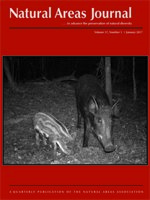The geographic distribution and size of wild pig (Sus scrofa) populations has rapidly expanded in recent years globally, resulting in increased impacts on natural and anthropogenic environments. In this review, we discuss the impacts of wild pigs on native ecosystems in terms of habitat degradation, competition with and depredation of native species, and disease transmission, and highlight recent developments in population control techniques, including areas where further research is required. We also provide an overview of many of the behavioral and demographic characteristics that make it difficult to control wild pigs and additional factors affecting the success of pig management programs in natural areas. Finally, based upon our review of contemporary research and successfully conducted pig eradication campaigns, we provide recommendations for the development of effective wild pig management programs. Overall, we recommend (1) managers implement strategies to detect wild pigs prior to the establishment of stable, breeding populations, (2) management strategies be tailored to specific regional habitat and climatic characteristics, and (3) control be implemented within an adaptive management framework, when possible, to allow further refinement of management objectives and improved characterization of the effects of wild pigs on natural areas.
How to translate text using browser tools
1 January 2017
Hog Heaven? Challenges of Managing Introduced Wild Pigs in Natural Areas
David A. Keiter,
James C. Beasley
ACCESS THE FULL ARTICLE

Natural Areas Journal
Vol. 37 • No. 1
January 2017
Vol. 37 • No. 1
January 2017
adaptive management
Control techniques
invasive species
population management
Sus scrofa




